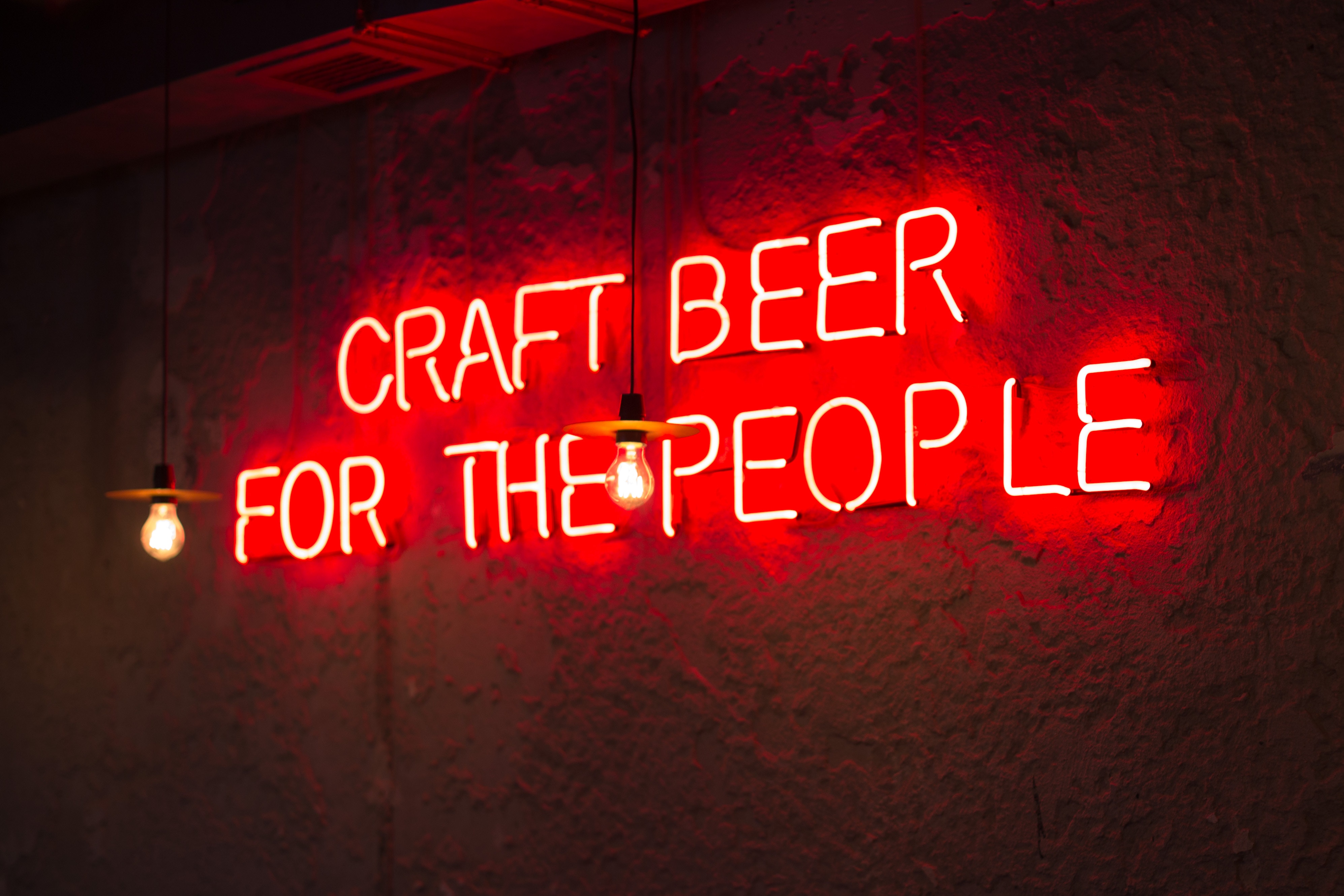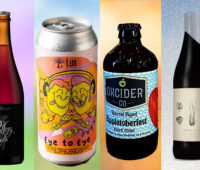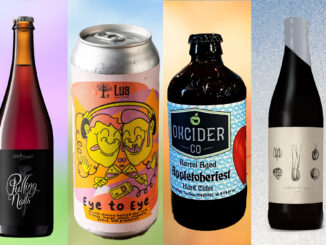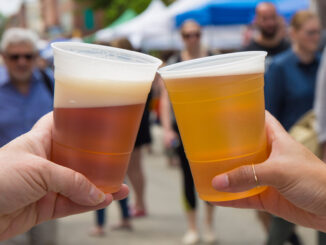
Of course, beer and Wisconsin go together like Stiller and Meara or Fey and Poehler (for those not born when hula hoops and Fizzies were the rage). This is mostly because of Wisconsin’s German heritage. Its earliest breweries date back to the 1830s when German immigration to the state began to peak.
These artisans of fermentation and the cultivation of hops expressed pride in their craft by dotting their territory with 160 breweries by the beginning of the Civil War. The number nearly doubled by the Gay ‘90s, but the entire notion of craft beer experienced a sea of change by the time Prohibition was repealed in the early 20th century. Large-scale beer brewing took over with the likes of Schlitz, Miller, Pabst, and Blatz, though some of these started as craft brewers of German lagers.
Despite the assembly line form of brewing, Wisconsin managed to maintain a presence of local breweries, especially in the penumbra of bigger cities such as Milwaukee. One of these happens to be associated with Badgers (of the university mascot kind) and state government. This college town and state capital, named after the fourth president of the United States who actually tried to create a national brewery, now owns a reputation for craft beers, thanks again to German and other European influences.
Madison—lying just west of big brother, Milwaukee, via I-94—hosts a handful of craft breweries that earn bookmarks from beer aficionados who like to dot their travel Atlases with “best places for a brew.” Though he attended the University of Iowa, Drew Madden attests to Madison’s hard-earned title as one of the best craft brewery towns in the nation if not to the limited health benefits of a good brew now and then.
Even Health Experts Weigh In
A healthcare IT professional, Drew Madden’s business travels bring him to many places around the globe. But he still calls the Upper Midwest home.
He cites a list of breweries emblematic of the pioneering traditions of the state, brew crafters who take the chemistry of hops, barley, and yeast to the next level. However, he also points to the properties of beer that actually counter the general assumption that it only promotes a pot belly and eventually chronic conditions such as colon cancer, gout, cirrhosis of the liver, and hypertension.
“Sure, there are serious consequences to overconsumption of beer,” says Madden, recipient of a number of awards in the healthcare IT industry. Its benefits come through moderate drinking of the dram, notes Madden, whose professional fervor revolves around electronic medical records (EMR).
“I’m passionate about EMR,” says Madden, a field in which he has spent more than a decade “collaborating with the best and brightest in the industry to implement, optimize, troubleshoot, and take on the complex challenges that accompany an EMR project.”
The Contents and Consumption Levels Tell the Story
Because of his professional involvement in the health industry, Drew Madden pays attention to health, especially when it comes to what and how we eat or drink.
First, he maintains, you must look at the contents of beer to assess its benefits or detriments to one’s health. It typically consists of water, grain, hops, and yeast, with malted barley predominating the grain content. The hops add the bitterness to beer and preserve it while acting as an antibacterial agent at the same time.
Depending on the brew crafter, wheat, maize, or rice can be substitutes for barley. Some crafters even incorporate fruit, herbs, and spices, especially the modern-day brewers such as those in Madison.
The alcohol itself offers health benefits, according to experts that Madden cites. For example, Harvard researcher Eric Rimm points to “strong evidence” that alcohol can increase good cholesterol when consumed moderately—amounting to one or two 12-ounce beers a day at the average volume of 3-6 percent alcohol.
Experts such as Rimm note that beer can contribute to your carbohydrate load, which helps restore spent energy with nutrients. Doctors, however, discourage anyone from relying on beer as a nutrient source because its contribution is very limited, and the hazards of overconsumption are too great.
Still, a University of Cambridge research team found that the one-or-two-beer-a-day crowd showed a reduced risk of heart attack, death by heart failure, and stroke when compared to those who didn’t drink alcohol.
So Shed the Stereotypes and Guilt
“These experts are generally telling us,” says Madden, “that you shouldn’t feel guilty for enjoying a beer or two from one day to the next because some of the beer’s contents do more good than harm when moderately consumed.”
Ah, the List!
Oh! And we were talking about good brews a while back, weren’t we? Lest we forget, the following is Drew Madden’s list of Madison brew houses that deserve your nod should you drum up a thirst while visiting this historic berg.
The Malt House on E. Washington Ave.
Dexter’s Pub on North St.
House of Brews on Helgeson Dr.
Great Dane Pub and Brewing Co. on Doty St. downtown
Maduro near the Capitol Building
Blue Moon Bar & Grill on University Ave.
HopCat on Gorham St.
Brasserie V on Monroe St.
Even without a founding father’s dream tribute to beer, his namesake city appears to be set just fine when it comes to this vital national interest.













Leave a Reply
Be the First to Comment!
You must be logged in to post a comment.
You must be logged in to post a comment.